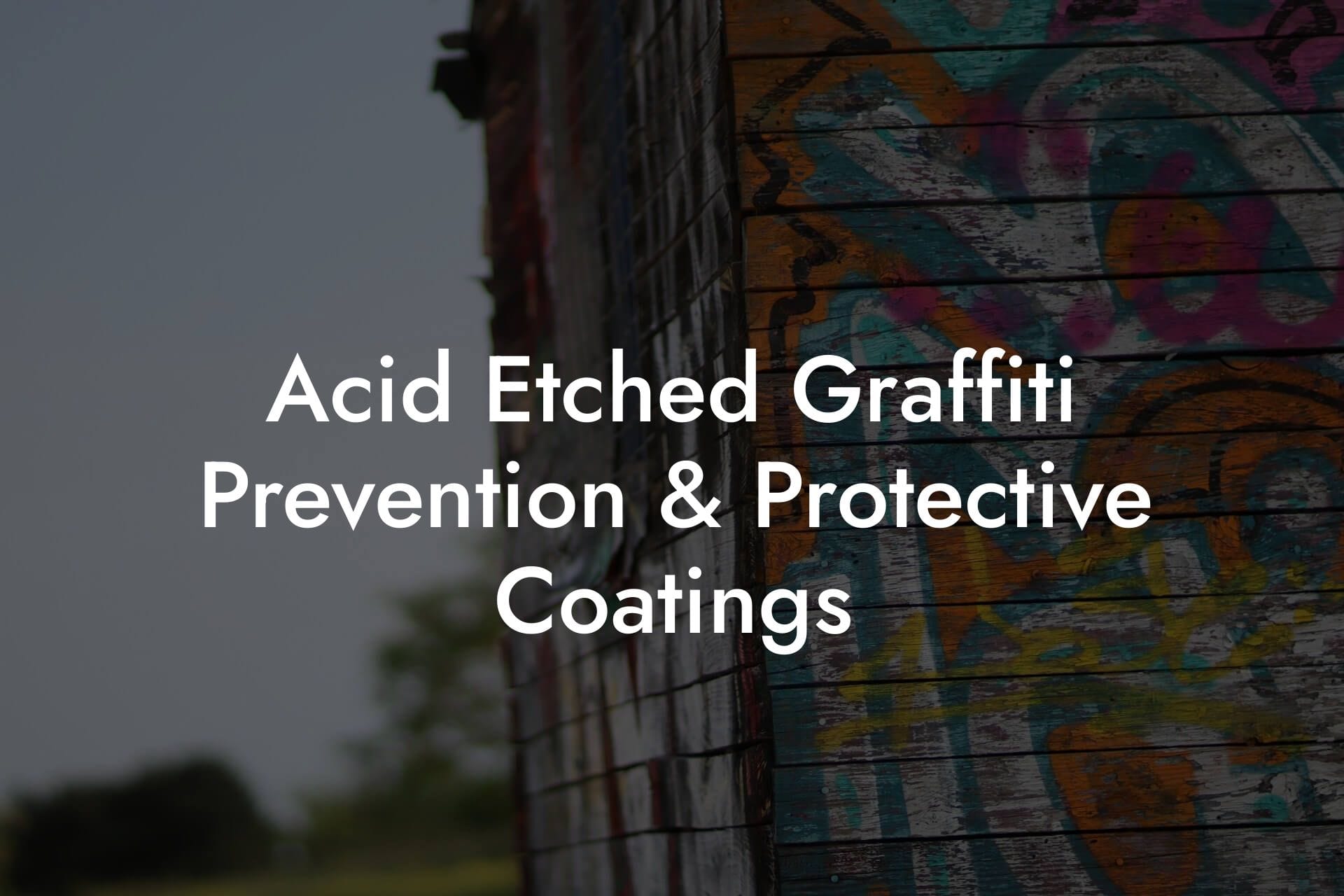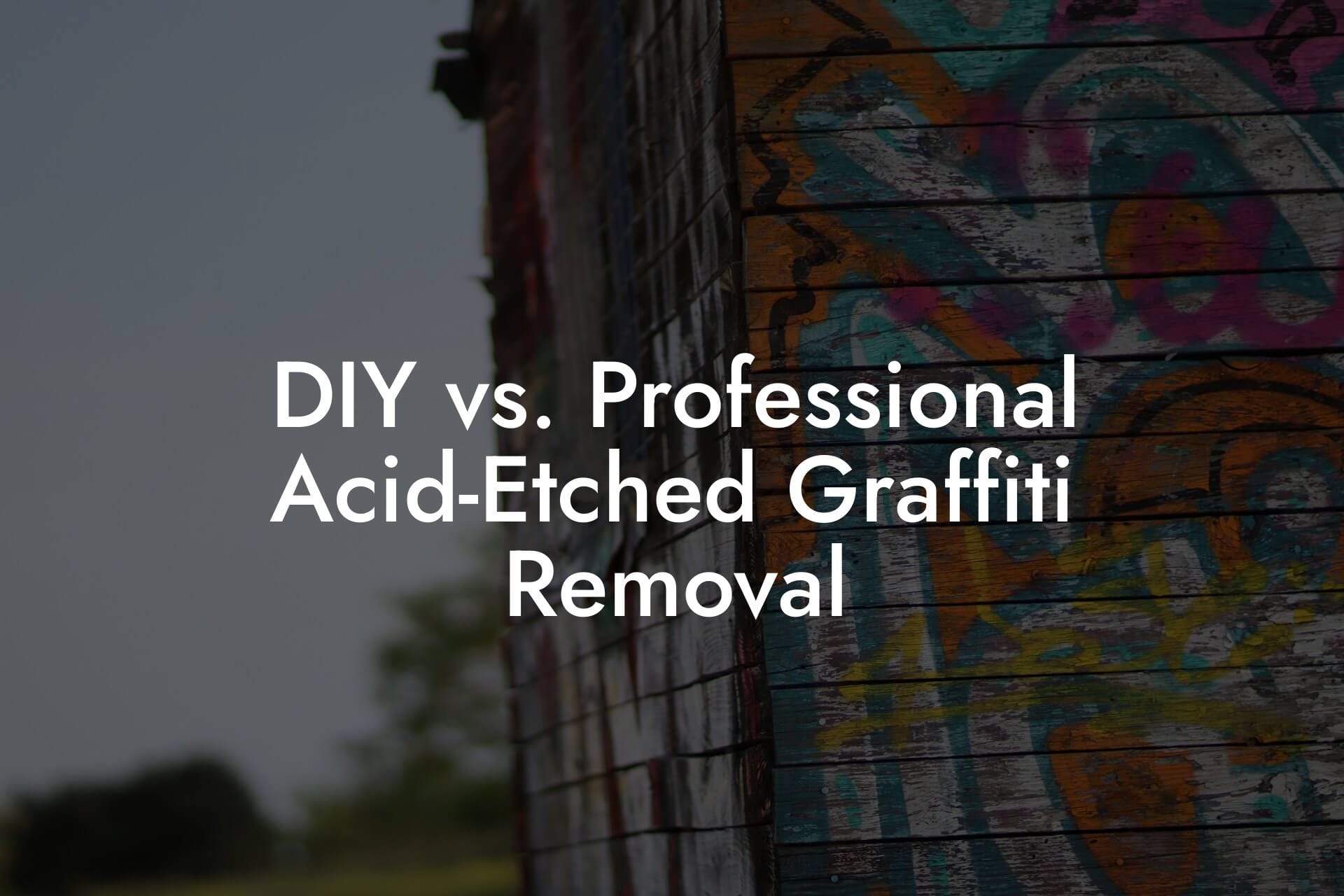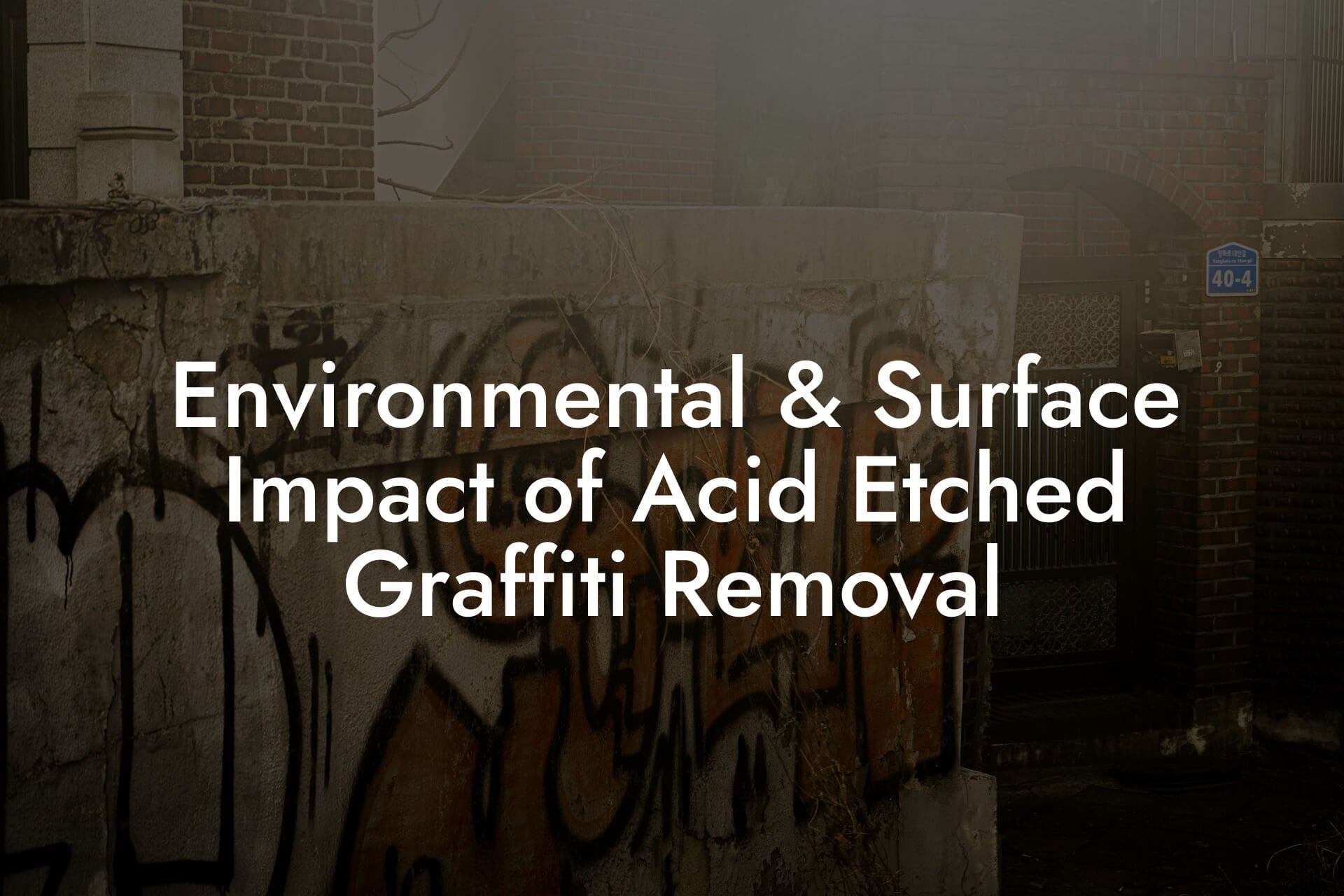Acid etching graffiti has emerged as one of the most insidious and hard‑to‑remove forms of vandalism in modern cities. Unlike spray‑paint or marker tags that sit on the surface, acid etched graffiti uses powerful chemicals to permanently alter building materials at a molecular level. This not only defaces the property but can compromise structural integrity, increase maintenance costs, and erode community pride. London’s historic stone façades, concrete underpasses, and urban art installations are increasingly targeted, leaving property managers, local authorities, and residents scrambling for answers.
Table of Contents
- Social and Psychological Drivers
- Rebellion, Identity, and Group Dynamics
- Thrill‑Seeking and Adrenaline
- Copycat Behavior and Social Media Amplification
- Low Cost of Entry
- Limited Cleanup and Maintenance Attempts
- Opportunity Structures in Urban Environments
- Chemical Knowledge Sharing
- Advances in Delivery Methods
- Masking and Protective Techniques
- Material Susceptibility and Target Selection
- Seasonality, Climate, and Time‑Windows
- Urban Decay and the “Broken Windows” Effect
- Artistic Experimentation and Street Art
- Message Durability and Political Expression
- Regulatory Gaps and Chemical Oversight
- Investigation and Prosecution Hurdles
- Community Policing and Reporting Innovations
- Protective Surface Treatments
- Environmental Design and Target Hardening
- Rapid‑Response Removal Teams
- Economic and Opportunity Factors
- Technological and Tactical Considerations
- Environmental and Urban Contexts
- Cultural and Artistic Motivations
- Legal and Enforcement Challenges
- Prevention and Mitigation Strategies
Understanding why acid etching happens is essential for crafting effective prevention and response strategies. In this article, we explore the full spectrum of drivers, social, psychological, economic, technological, environmental, cultural, legal, and tactical, that motivate vandals to choose acid over paint. We’ll also examine real‑world examples from London, review enforcement challenges, and outline best practices for mitigation. By the end, you’ll have a comprehensive view of the phenomenon and the tools to protect your property.
Social and Psychological Drivers
Rebellion, Identity, and Group Dynamics
Graffiti in its earliest forms was an act of defiance, scrawled protest slogans in ancient Rome, political messages on Berlin walls, or cultural tags in New York subways. Acid etching represents a modern evolution of this defiance. When individuals feel disenfranchised, socially, economically, or politically, they may resort to vandalism to assert their presence. Acid etching, by its dangerous and permanent nature, delivers an amplified statement: this mark cannot be easily erased by authorities.
Group identity plays a critical role. Graffiti crews or “crews” often operate under a shared name, competing with rival groups for territorial dominance and reputation. Within these crews, members who master the technical challenge of acid etching gain elevated status. This dynamic mirrors gang hierarchies, where the most daring or skilled members earn respect. Anthropologists studying urban subcultures note that acts perceived as risk‑laden or skill‑intensive, such as scaling walls or using acids, become rites of passage that reinforce group cohesion and identity.
Thrill‑Seeking and Adrenaline
Adrenaline is a powerful motivator. Vandals describe a rush when executing acid etch attacks: procuring the chemicals, sneaking into a location under cover of darkness, applying the etchant, and departing before detection. Each stage involves potential hazards, from chemical burns to arrest. Criminology research indicates that individuals with higher sensation‑seeking traits are more likely to engage in daring forms of vandalism, and acid etching sits near the top of that risk continuum. The element of danger itself becomes part of the “art,” providing a visceral thrill that conventional tagging cannot match.
Copycat Behavior and Social Media Amplification
In the age of Instagram and TikTok, images of acid‑etched walls and floors can go viral. Vandals post “proof” of their work, complete with geotags and crew hashtags. This public exhibition fuels a copycat phenomenon: wannabe taggers see the likes and comments, perceive a low risk of swift removal, and decide to emulate the technique. Urban studies experts warn that when any form of graffiti receives high visibility online, with little negative feedback, its adoption rate in the real world can spike by 20% or more within months.
Economic and Opportunity Factors
Low Cost of Entry
Compared to specialized spray‑paint or marker equipment, acids can be obtained relatively cheaply. A litre of industrial‑grade hydrochloric acid can cost under £15, and smaller, household‑grade muriatic acid is even less expensive. Vandals often purchase these from hardware stores, pool‑supply outlets, or online marketplaces under the guise of cleaning or pool maintenance. Because the containers are small and unlabeled, or relabeled, tracking purchases back to individuals is extremely difficult. This low cost of entry and high concealability makes acid etching an economically sensible choice for vandals operating on tight budgets.
Limited Cleanup and Maintenance Attempts
Property owners often deploy standard graffiti‑removal tactics, pressure washing, solvent sprays, or overpainting, when they first discover vandalism. These methods are largely ineffective against acid‑etched marks, which are part of the substrate itself. When standard cleaning fails, managers may delay more specialized interventions, inadvertently leaving the damage visible for weeks or months. This window provides vandals with a psychological victory: they see their work still stands, discouraging property owners and emboldening further attacks.
Opportunity Structures in Urban Environments
Environmental criminology introduces the concept of “opportunity structures”, features of the built environment that facilitate crime. Poor lighting, low pedestrian traffic at night, blind spots in CCTV coverage, and easy access to vulnerable façades create perfect conditions for acid etching. Studies of London boroughs show that acid etching is disproportionately concentrated in areas where these opportunity factors coincide: pedestrian tunnels, university peripheries, industrial estates, and rear alleys of commercial streets.
Technological and Tactical Considerations
Chemical Knowledge Sharing
The internet has democratized specialized knowledge. YouTube tutorials, darknet forums, and encrypted messaging apps now host detailed guides on diluting acids, adjusting dwell times, and neutralizing splashes. Newer taggers, often teenagers without formal chemical training, can learn precise application methods within days. This widespread information sharing accelerates the diffusion of acid‑etch techniques across cities and even internationally.
Advances in Delivery Methods
Early acid etchers relied on brushes or sponges, but innovations borrowed from the cleaning and detailing industries have improved precision and speed:
- Airbrush Systems: Modified hobbyist airbrushes allow for fine lines and gradient effects.
- Pump Sprayers: Garden or industrial pump sprayers with narrow nozzles create consistent coverage.
- Gelled Etchants: Thickened acid gels adhere longer to vertical surfaces, increasing penetration without runoff.
These tactics enable faster, sharper, and deeper etches, reducing time on site and enhancing “quality” in the eyes of vandals.
Masking and Protective Techniques
To protect adjacent surfaces and control acid spread, vandals use temporary masking tapes, plastic sheeting, and even custom‑cut stencils. This level of preparation mirrors professional stone‑engraving practices. Some crews carry portable gas masks or respirators to avoid detection and protect themselves from inhaling fumes. While such precautions underscore the danger of the activity, they also highlight the sophistication that acid‑etch graffiti has achieved.
Environmental and Urban Contexts
Material Susceptibility and Target Selection
Urban developers often choose materials for aesthetics and cost, light‑coloured limestone, red sandstone, unsealed concrete, that unfortunately share a common vulnerability: high porosity and carbonate content. Acid seeps into pores, dissolving material beyond the initial application. By contrast, polished granites or sealed metals resist etching. Savvy vandals survey neighbourhoods for these “soft targets,” concentrating their efforts where they know damage will be deepest and most visible.
Seasonality, Climate, and Time‑Windows
Weather patterns influence etching success. Dry, warm periods are ideal: acids remain in place longer without rainfall dilution, and evenings extend later, giving vandals more working time under cover of darkness. In London, acid graffiti reports surge between May and September, peaking in July and August when average nightly temperatures exceed 15 °C and rainfall drops below monthly averages. Conversely, winter storms can wash away diluted acids before full etch occurs, reducing both success rate and aesthetic impact.
Urban Decay and the “Broken Windows” Effect
The “broken windows” theory posits that visible signs of neglect, broken glass, peeling paint, litter, invite further crime. Acid etching often appears in these contexts as both symptom and accelerator of decay. Once a façade shows etched scars, the area looks neglected, inviting other forms of vandalism and petty crime. Local surveys in East and South London reveal clusters of acid graffiti overlapping with higher rates of graffiti recurrence, littering, and anti‑social behavior tickets. Addressing acid etching quickly can therefore have wider community safety benefits.
Cultural and Artistic Motivations
Artistic Experimentation and Street Art
There is a small but vocal subset of street artists who argue that acid etching offers creative possibilities unavailable with paint. They point to techniques like intaglio or relief sculpture, where permanent grooves and textures interact with light and shadow. In sanctioned art zones or commissioned public artworks, professional acid etching under controlled conditions can produce stunning results. However, in unauthorized settings, these “artistic” motives blur into vandalism, causing irreversible damage and legal liability.
Message Durability and Political Expression
Activists seeking a lasting memorial or political statement sometimes choose acid etching deliberately. Whether etching protest slogans near embassies or commemorating a viral cause, they value the permanence: etched text survives multiple cleanings and repaintings. This contrasts with painted messages that authorities can scrub or cover within hours. The decision to etch becomes a tactical choice in protest art, ensuring messages endure until decision‑makers cannot ignore them.
Legal and Enforcement Challenges
Regulatory Gaps and Chemical Oversight
UK law regulates the sale and use of hazardous acids under the Control of Substances Hazardous to Health (COSHH) and REACH regulations. However, enforcement focuses on large‑scale industrial handle, small retail purchases fly under the radar. Hardware stores may not check IDs or require end‑use declarations for bottles under 2 L. As a result, vandals can stockpile acids unnoticed.
Investigation and Prosecution Hurdles
Prosecuting acid vandals involves multiple challenges:
- Evidence Collection: Chemical residue sampling and matching to purchased products requires forensic labs.
- Witness Reliability: Tagging often occurs late at night, with few bystanders willing to intervene.
- Low Reporting Rates: Property owners may delay reporting due to cleanup costs or fear of publicity.
Consequently, conviction rates for acid etching remain low. Even successful prosecutions often result in fines or community sentences rather than custodial penalties, reducing deterrence.
Community Policing and Reporting Innovations
Some London boroughs have piloted smartphone apps for instant graffiti reporting, allowing users to upload geotagged photos, chemical odor alerts, and time‑stamped videos. Multi‑agency task forces combining environmental health officers, local police, and graffiti removal teams can respond within hours. Early data from pilot schemes in Hackney and Camden show a 30% increase in reporting and a 15% reduction in repeat etching incidents within six months.
Prevention and Mitigation Strategies
Protective Surface Treatments
Property owners can significantly reduce risk by applying specialized coatings:
- Hydrophobic Silane/Siloxane Sealers: Penetrate masonry, creating a water‑ and acid‑repellent barrier that causes etchant to bead and roll off.
- Sacrificial Coatings: Thin, removable films that absorb acid damage and peel away with graffiti, then are replaced, ideal for heritage stonework.
- Permanent Ceramic Glazes: High‑temperature fusions on tile and ceramic façades that resist acid attack indefinitely.
Costs vary from £2 to £15 per square metre, depending on product and substrate, but long‑term savings on maintenance often outweigh initial investment.
Environmental Design and Target Hardening
- Lighting Upgrades: High‑intensity LED floodlights and motion‑activated spotlights eliminate dark corners and stall vandals.
- CCTV with Chemical Sensors: Cutting‑edge systems detect unusual pH changes or acid vapors, triggering alerts and cameras focused on the source.
- Physical Barriers: Raised planters, spiky hedges, and low fencing keep taggers at a distance from vulnerable surfaces.
- Community Art Projects: Murals and legal graffiti walls channel creative energy into sanctioned artworks, reducing unauthorized tagging elsewhere.
Rapid‑Response Removal Teams
Quick removal is a proven deterrent. Studies show that graffiti removed within 24–48 hours reduces recurrence by up to 70%. Specialized acid‑etch removal teams, like DUA London, use on‑site neutralization, micro‑abrasion, and diamond polishing to restore surfaces in hours rather than days. Bundled service agreements with local councils and commercial landlords can ensure uninterrupted coverage and discounted rates for frequent interventions.
Acid etching graffiti is driven by a complex interplay of social rebellion, psychological thrill‑seeking, economic opportunity, technological access, urban vulnerabilities, cultural statements, and legal loopholes. To stem its rise, stakeholders, from property owners and heritage stewards to law enforcement and community groups, must implement a multi‑layered strategy: apply protective coatings, harden environments, enhance reporting and enforcement, and engage communities in positive public art. By understanding the “why” behind acid etching, London can safeguard its built heritage and public spaces, ensuring they remain vibrant and respected rather than marred by permanent scars.
Toby Doherty
Toby Doherty is a seasoned graffiti removal expert with over 20 years of experience in the industry. Throughout his career, Toby has helped countless businesses and property owners in London maintain clean, graffiti-free spaces. His extensive knowledge of graffiti removal techniques, from eco-friendly solutions to advanced technologies like laser cleaning, makes him a trusted authority in the field. Passionate about restoring urban environments, Toby combines his hands-on expertise with a commitment to staying up-to-date on the latest industry trends and innovations. When he’s not out in the field, Toby shares his insights through detailed articles, offering practical advice on everything from graffiti prevention to legal considerations.



